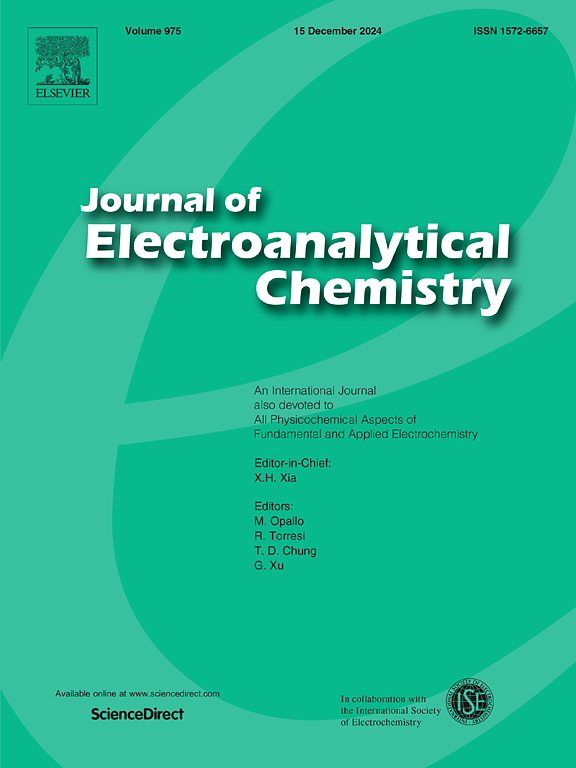Vanadium-doped Prussian blue analogues as advanced cathode for sodium-ion batteries
IF 4.1
3区 化学
Q1 CHEMISTRY, ANALYTICAL
引用次数: 0
Abstract
Prussian blue analogues (PBAs) have broad application prospects in the field of cathode electrode for sodium ion batteries (SIBs) because they can promote the insertion and extraction process of sodium ions. Unfortunately, PBAs exhibits poor cycling performance and low coulombic efficiency because of their large vacancy flaws and inadequate structural stability during the insertion/extraction of Na+. Herein, we have developed a series of vanadium-doped PBAs with different transition metal (Fe, Co, Ni) via chemical co-precipitation method combined with water bath process. Through rigorous regulation of transition metals, the designed sodium vanadium ferrohexacyanate (VFeHCF) exhibits optimal electrochemical properties, including an initial specific capacity of 110 mAh g−1 at 20 mA g−1 with a coulombic efficiency of 93.7 %, and a reversible capacity of 80 mAh g−1 after 100 cycles with a capacity retention of 72.7 %, outperforming VCoHCF and VNiHCF. The enhancement in sodium storage can be attributed to the establishment of a stable Na+ interspersion potential between V4+ and Fe2+, as well as the extensive coordination environment of the iron ions, which promotes both electron transfer and Na+ transport.

掺钒普鲁士蓝类似物作为钠离子电池的高级阴极
普鲁士蓝类似物(PBAs)由于能促进钠离子的插入和提取过程,在钠离子电池阴极电极领域具有广阔的应用前景。遗憾的是,在Na+的插入/提取过程中,PBAs存在较大的空位缺陷,结构稳定性不足,导致循环性能差,库仑效率低。本文采用化学共沉淀法结合水浴法制备了一系列不同过渡金属(Fe, Co, Ni)掺杂钒的PBAs。通过对过渡金属的严格调控,所设计的钒亚铁酸钠(VFeHCF)具有最佳的电化学性能,在20 mA g−1条件下的初始比容量为110 mAh g−1,库仑效率为93.7%,循环100次后的可逆容量为80 mAh g−1,容量保持率为72.7%,优于VCoHCF和VNiHCF。钠储存的增强可归因于V4+和Fe2+之间建立了稳定的Na+弥散电位,以及铁离子广泛的配位环境,促进了电子转移和Na+输运。
本文章由计算机程序翻译,如有差异,请以英文原文为准。
求助全文
约1分钟内获得全文
求助全文
来源期刊
CiteScore
7.80
自引率
6.70%
发文量
912
审稿时长
2.4 months
期刊介绍:
The Journal of Electroanalytical Chemistry is the foremost international journal devoted to the interdisciplinary subject of electrochemistry in all its aspects, theoretical as well as applied.
Electrochemistry is a wide ranging area that is in a state of continuous evolution. Rather than compiling a long list of topics covered by the Journal, the editors would like to draw particular attention to the key issues of novelty, topicality and quality. Papers should present new and interesting electrochemical science in a way that is accessible to the reader. The presentation and discussion should be at a level that is consistent with the international status of the Journal. Reports describing the application of well-established techniques to problems that are essentially technical will not be accepted. Similarly, papers that report observations but fail to provide adequate interpretation will be rejected by the Editors. Papers dealing with technical electrochemistry should be submitted to other specialist journals unless the authors can show that their work provides substantially new insights into electrochemical processes.

 求助内容:
求助内容: 应助结果提醒方式:
应助结果提醒方式:


